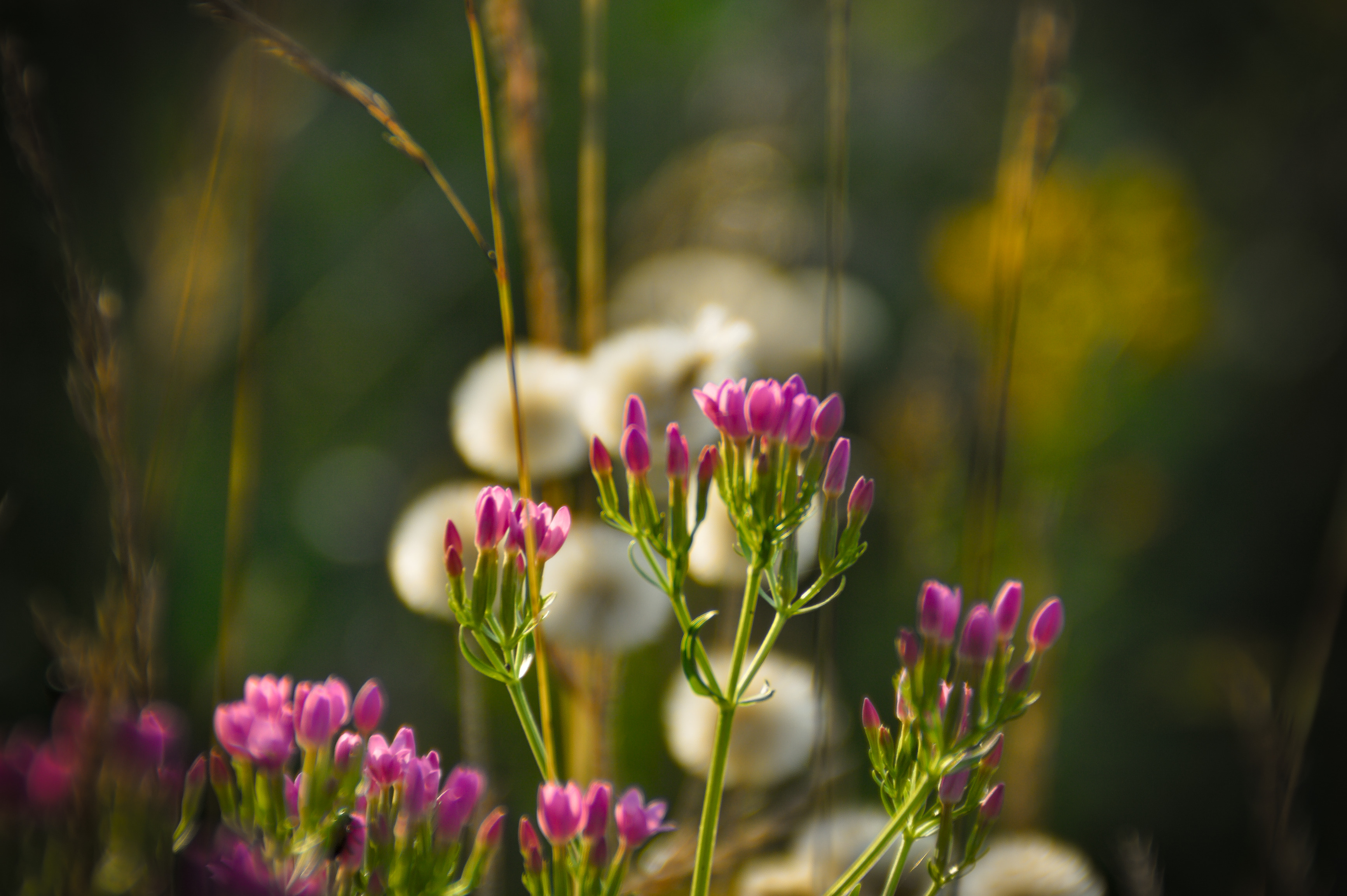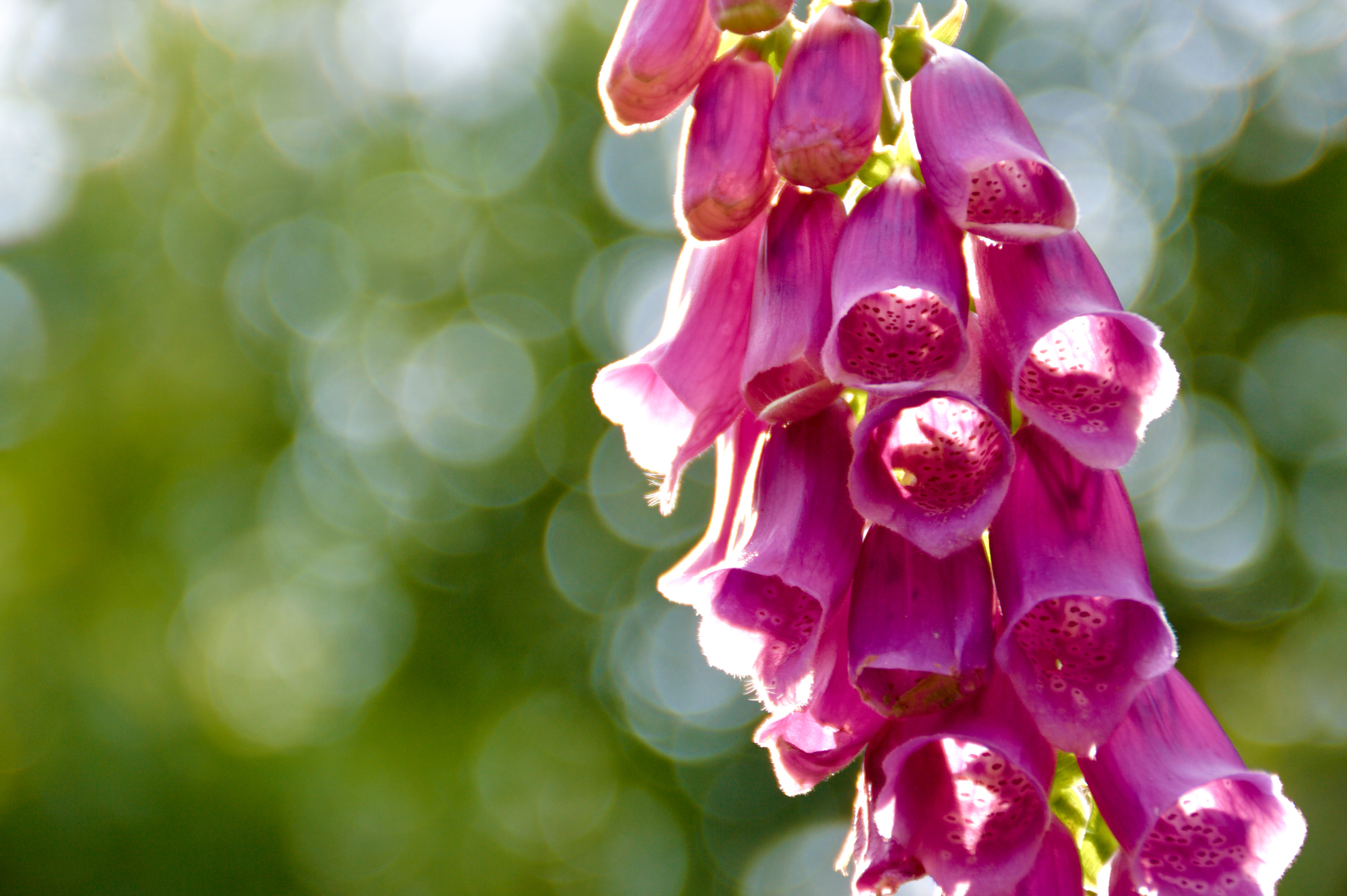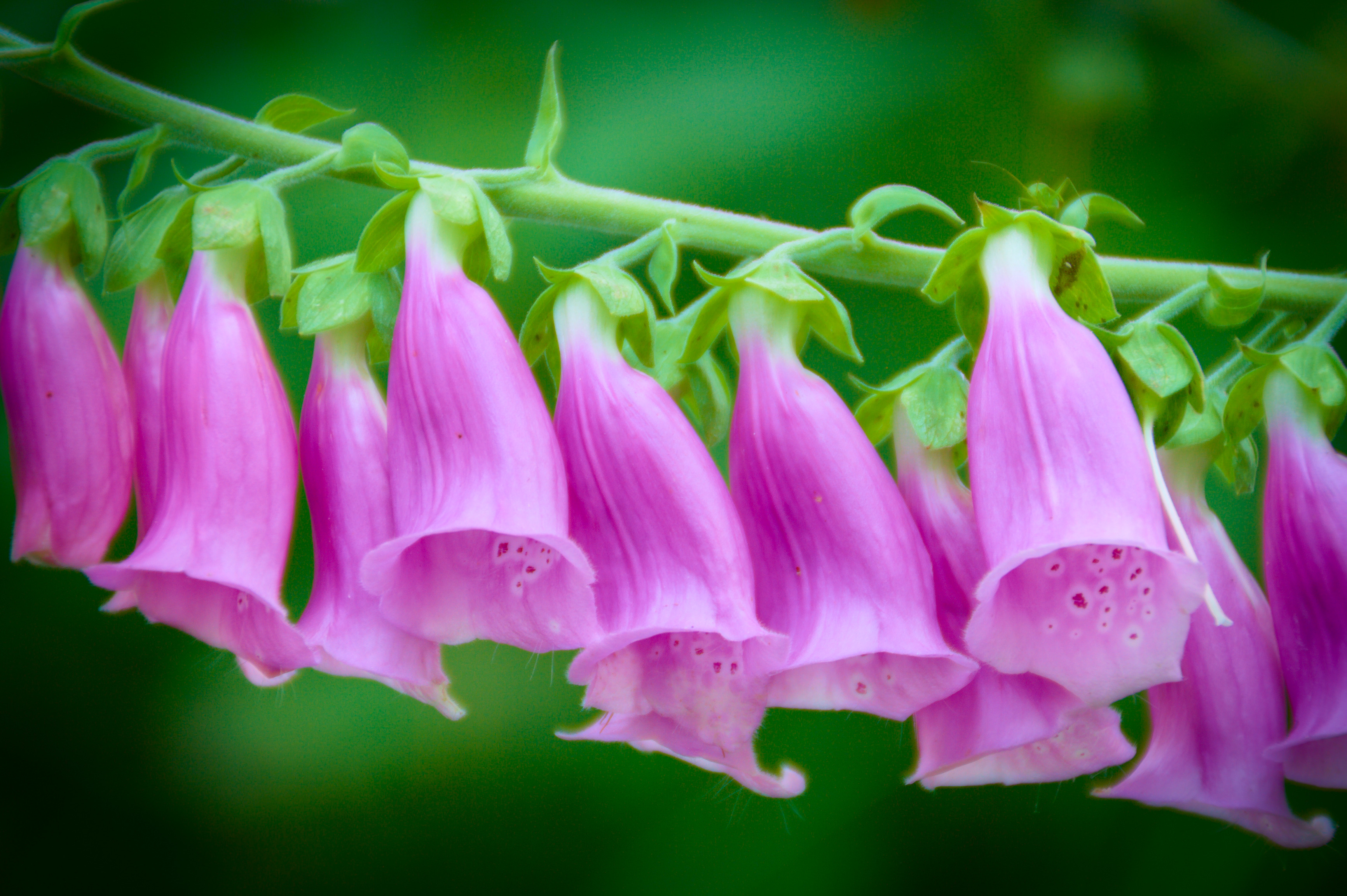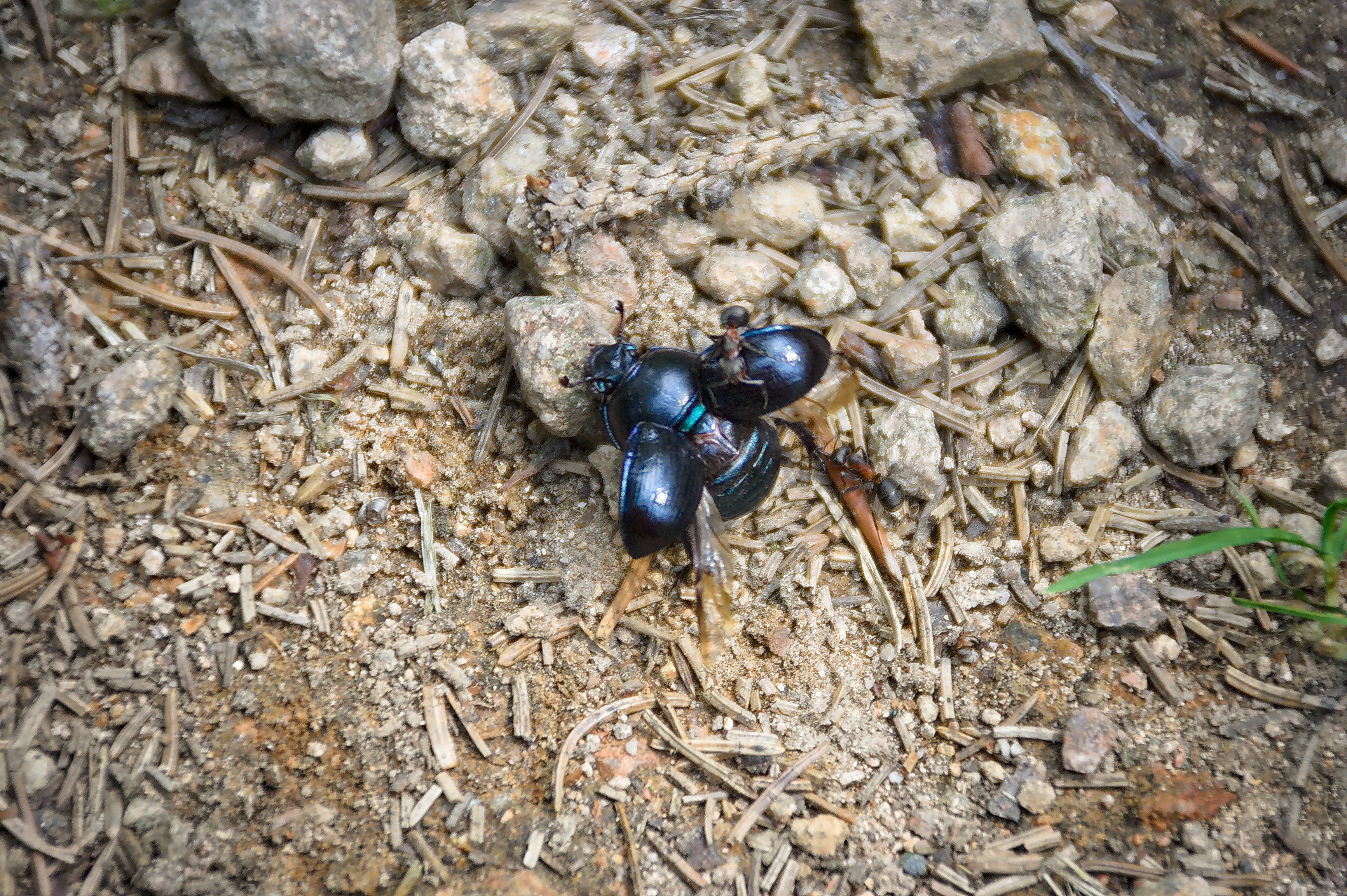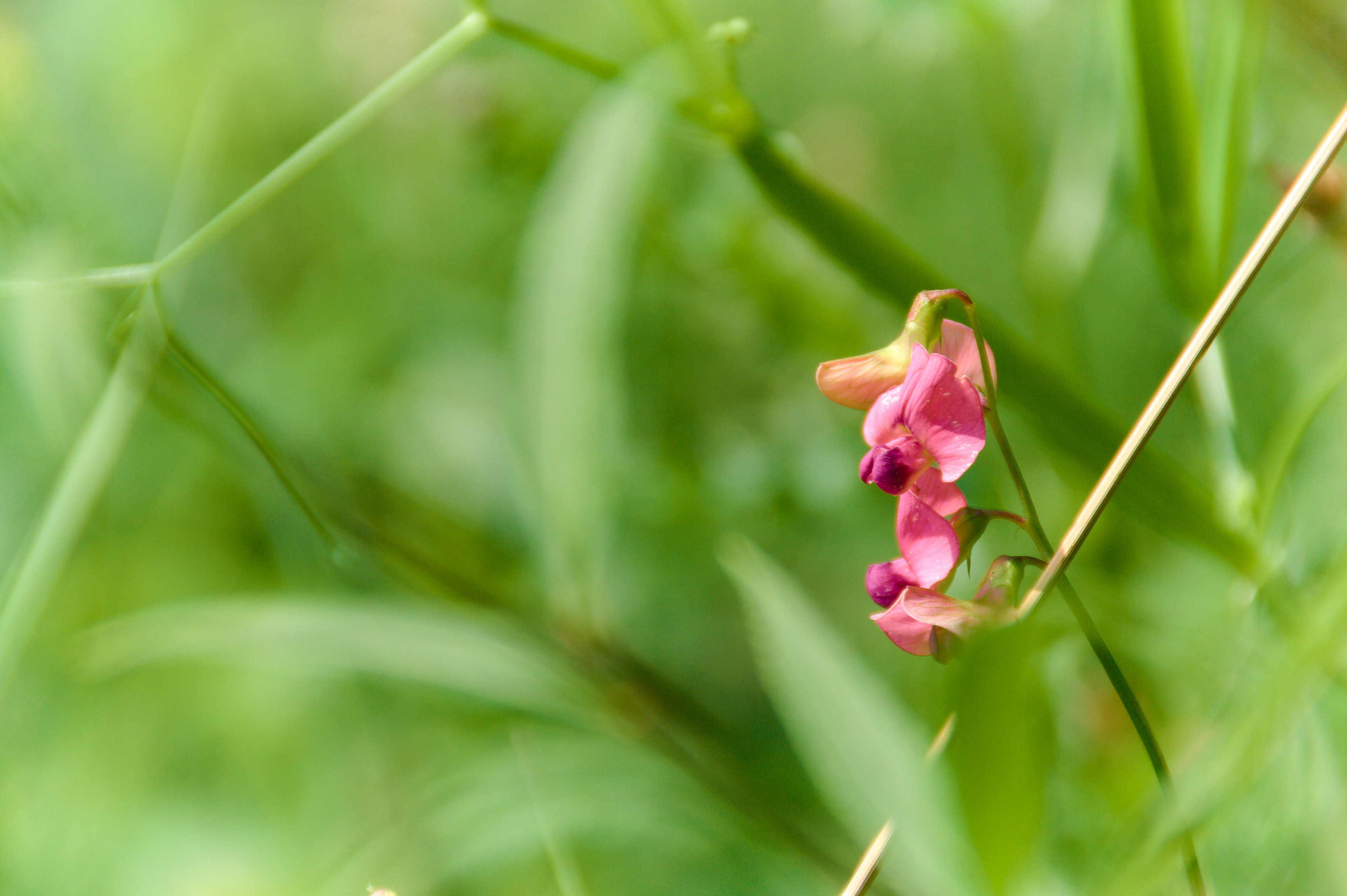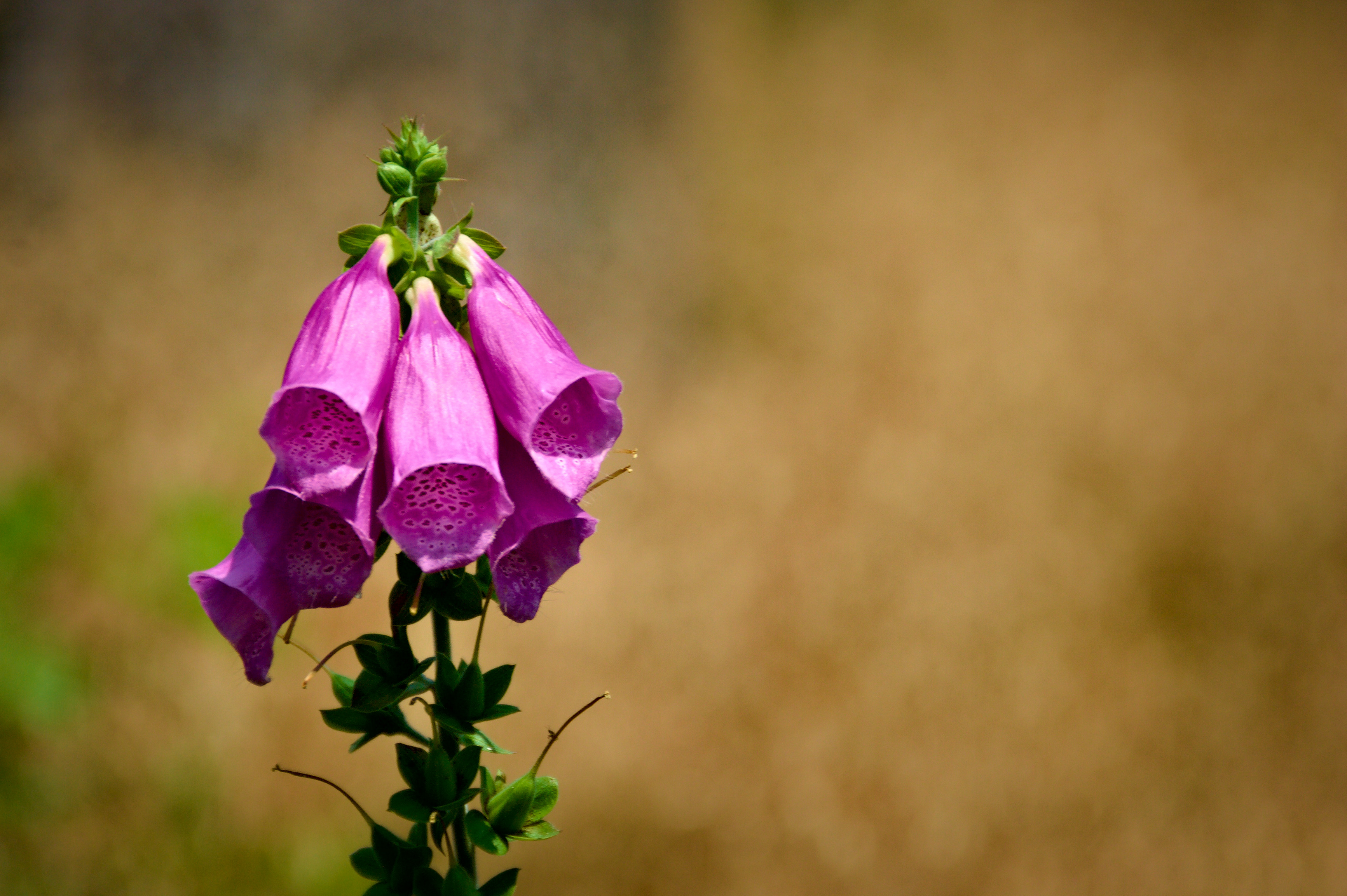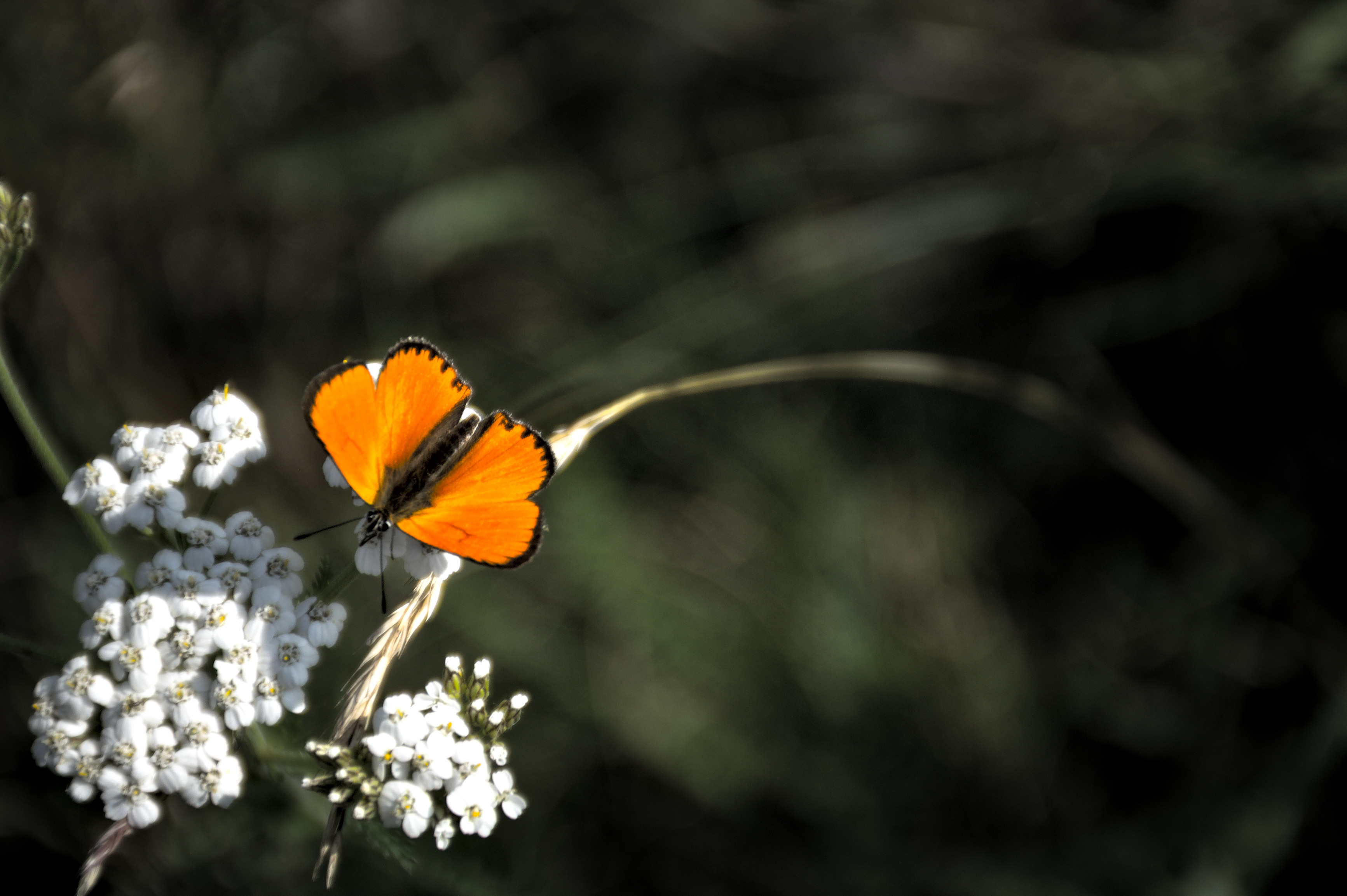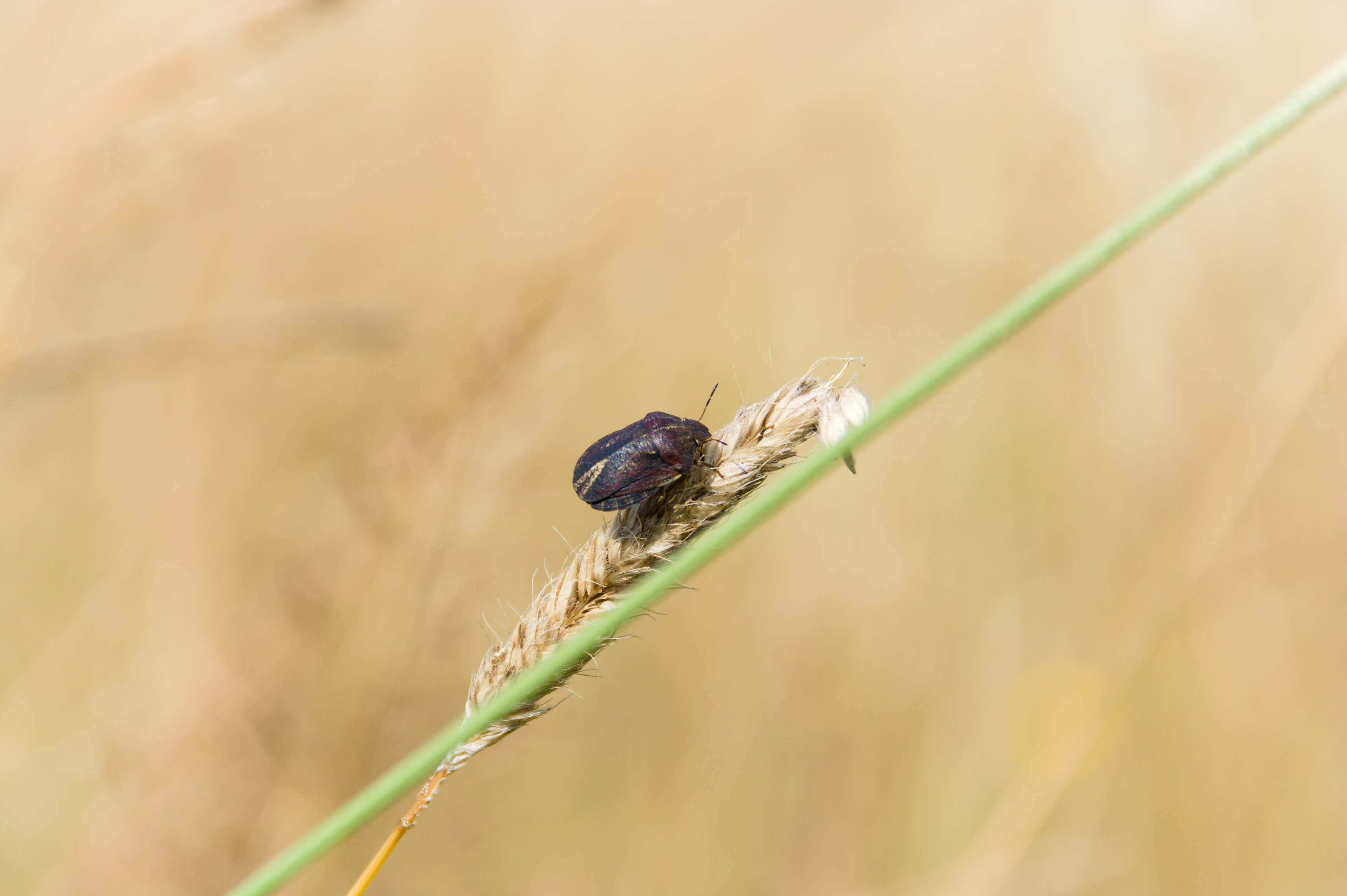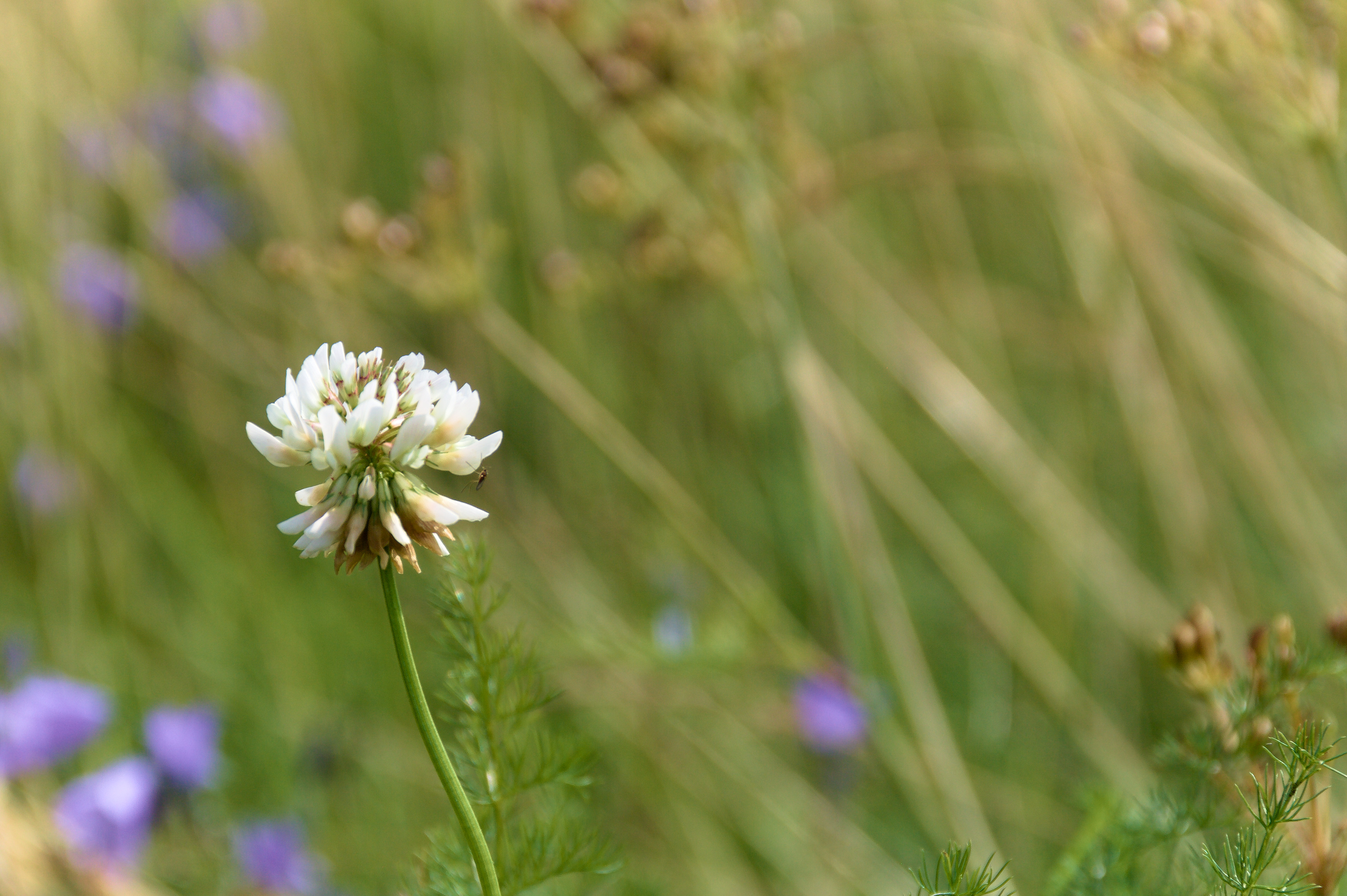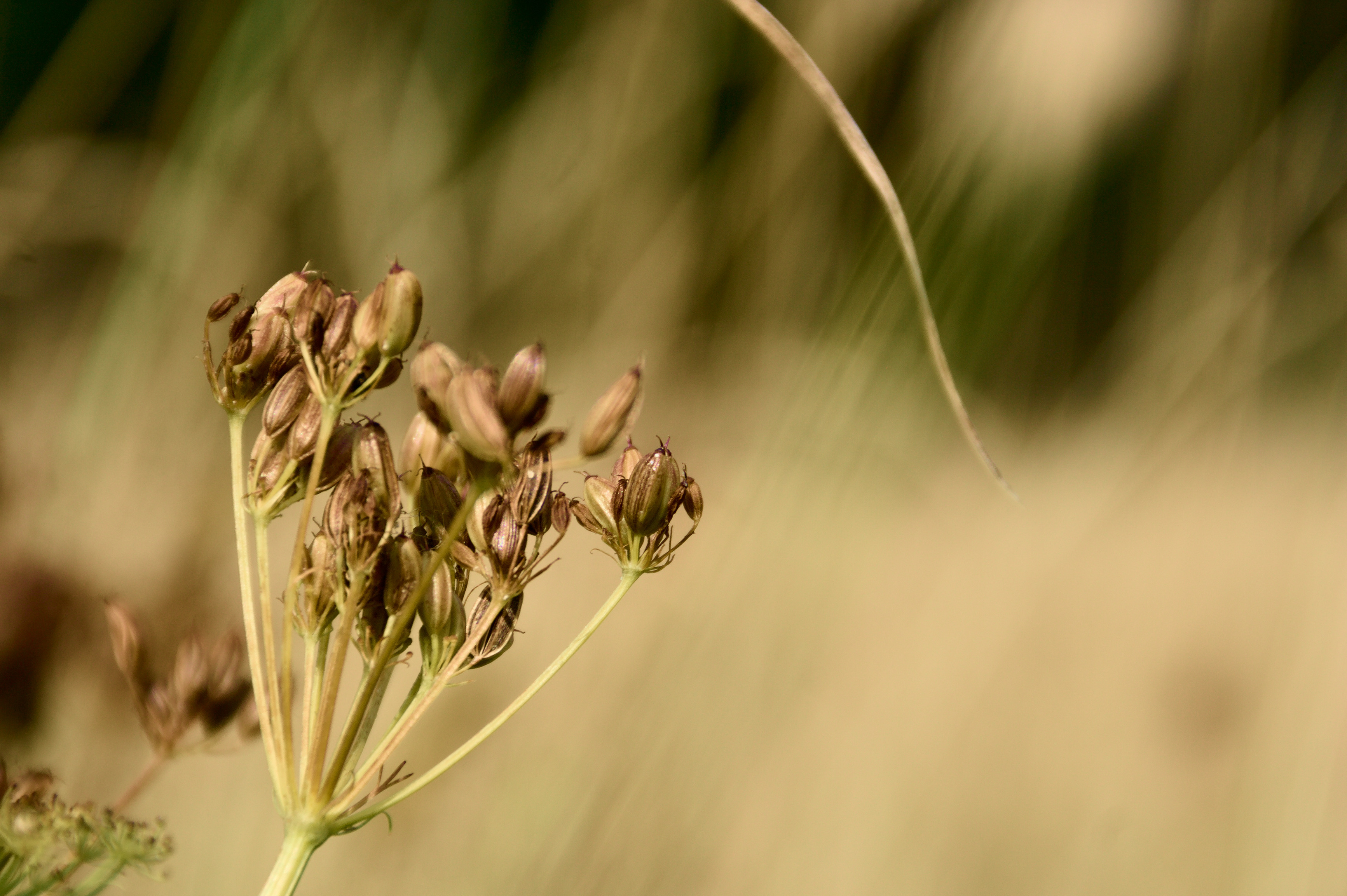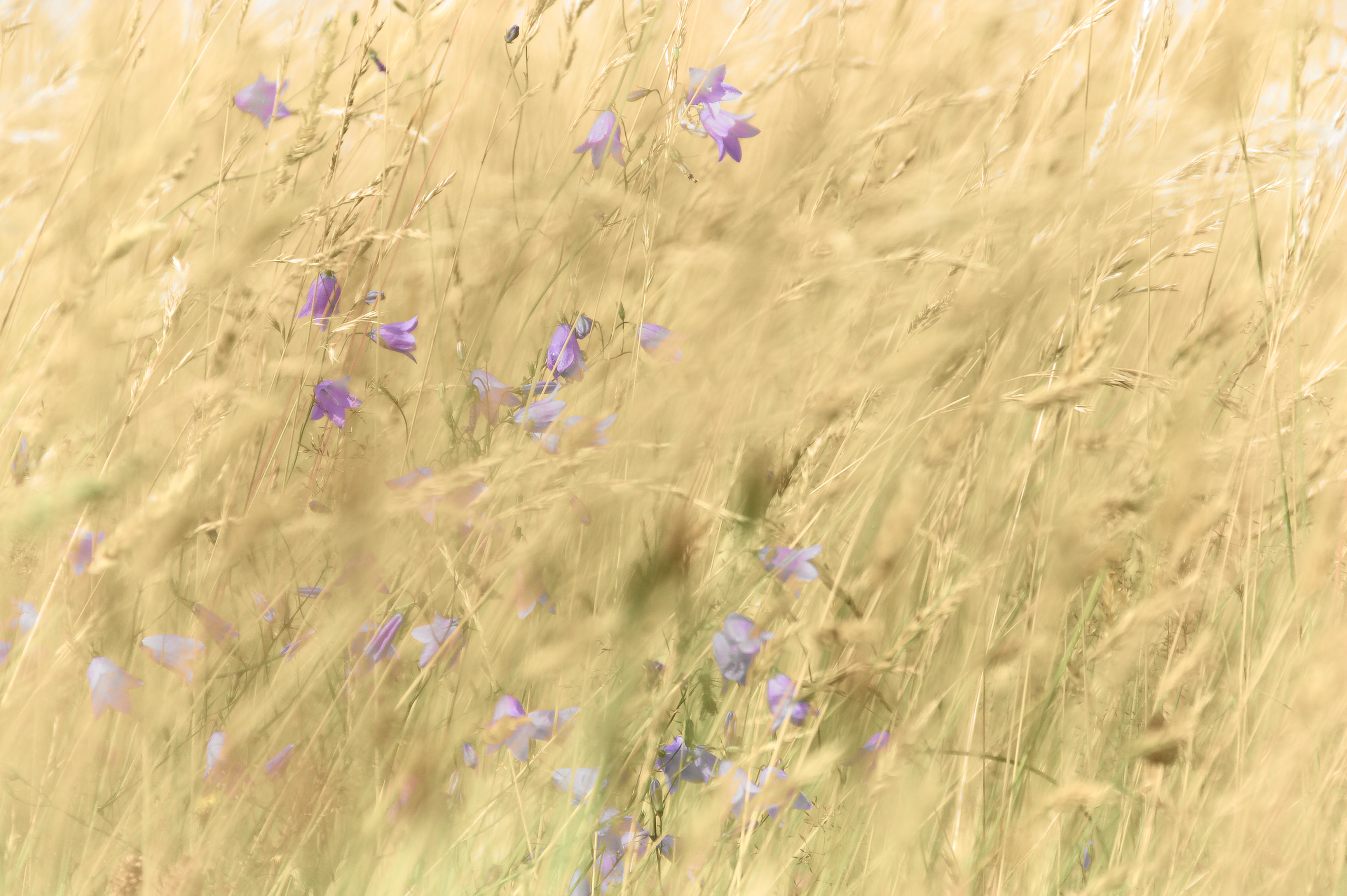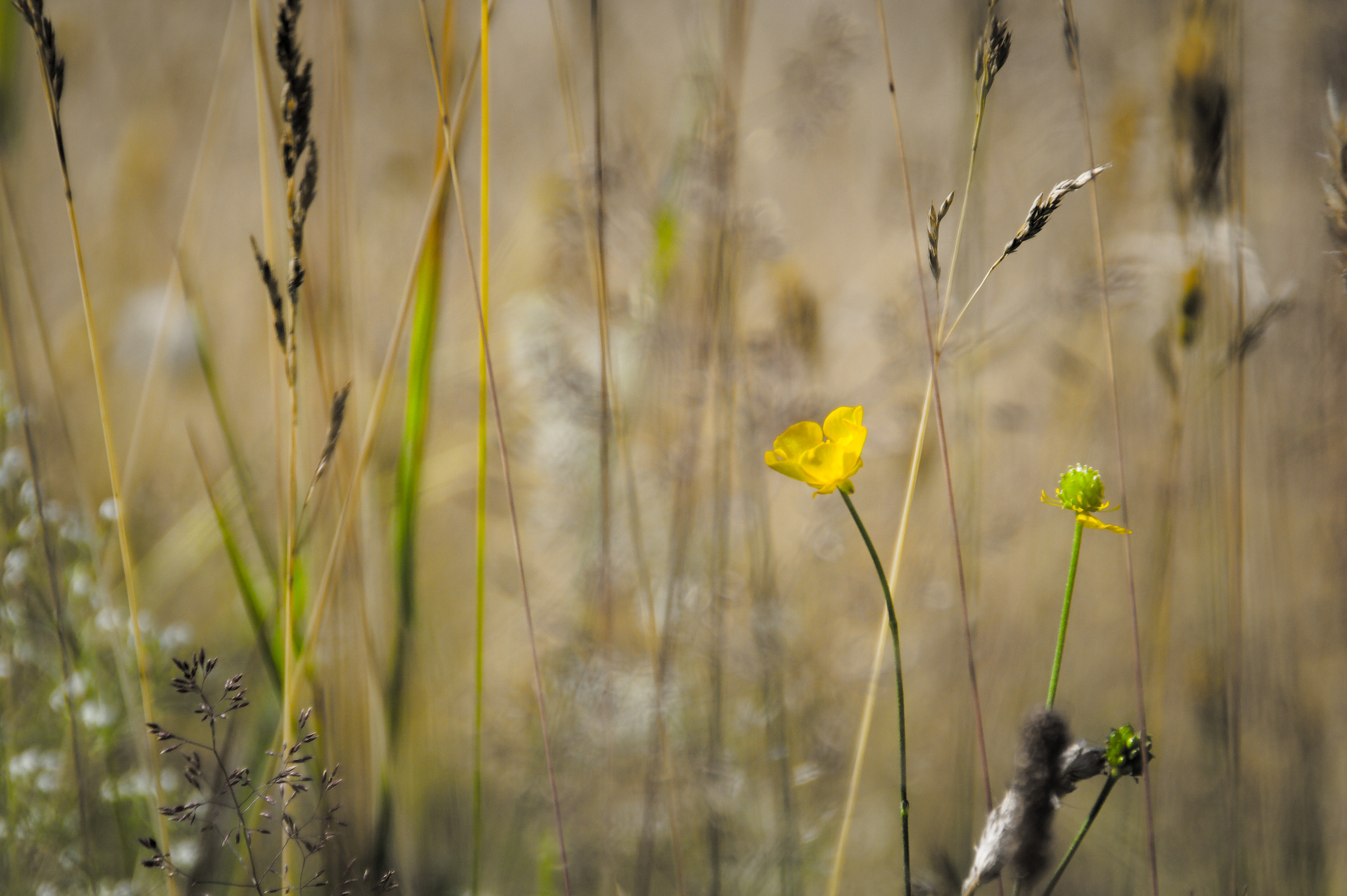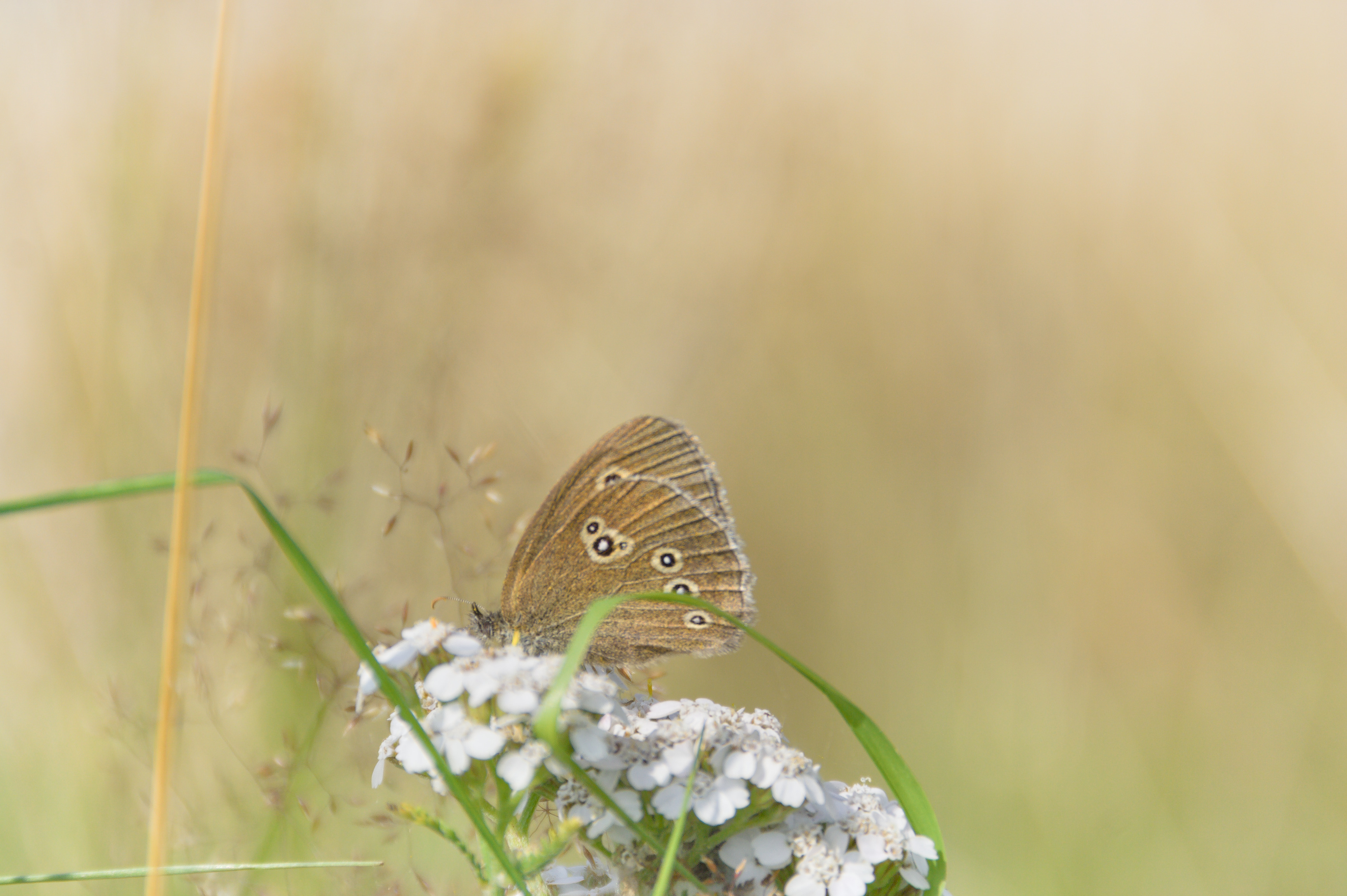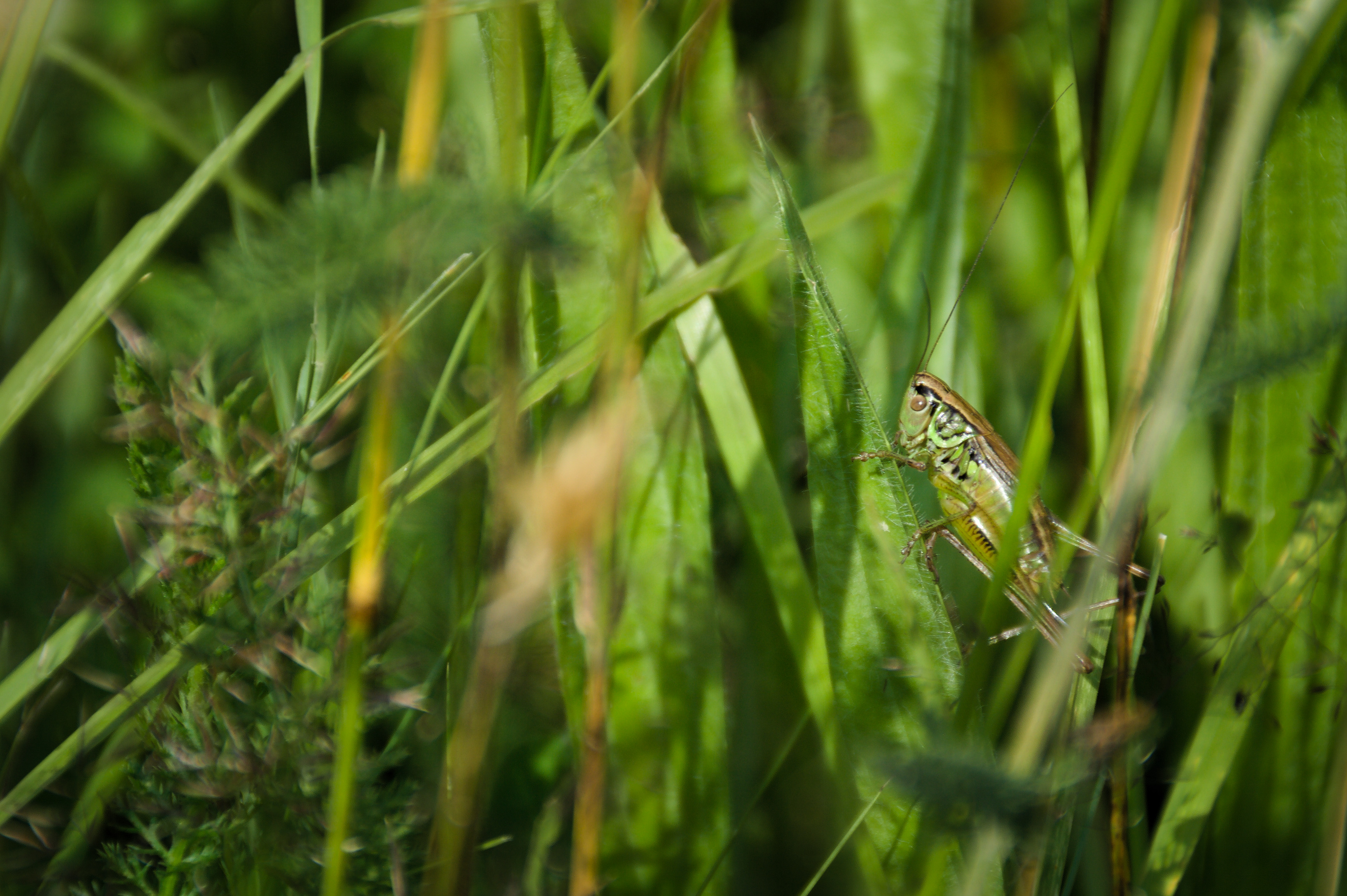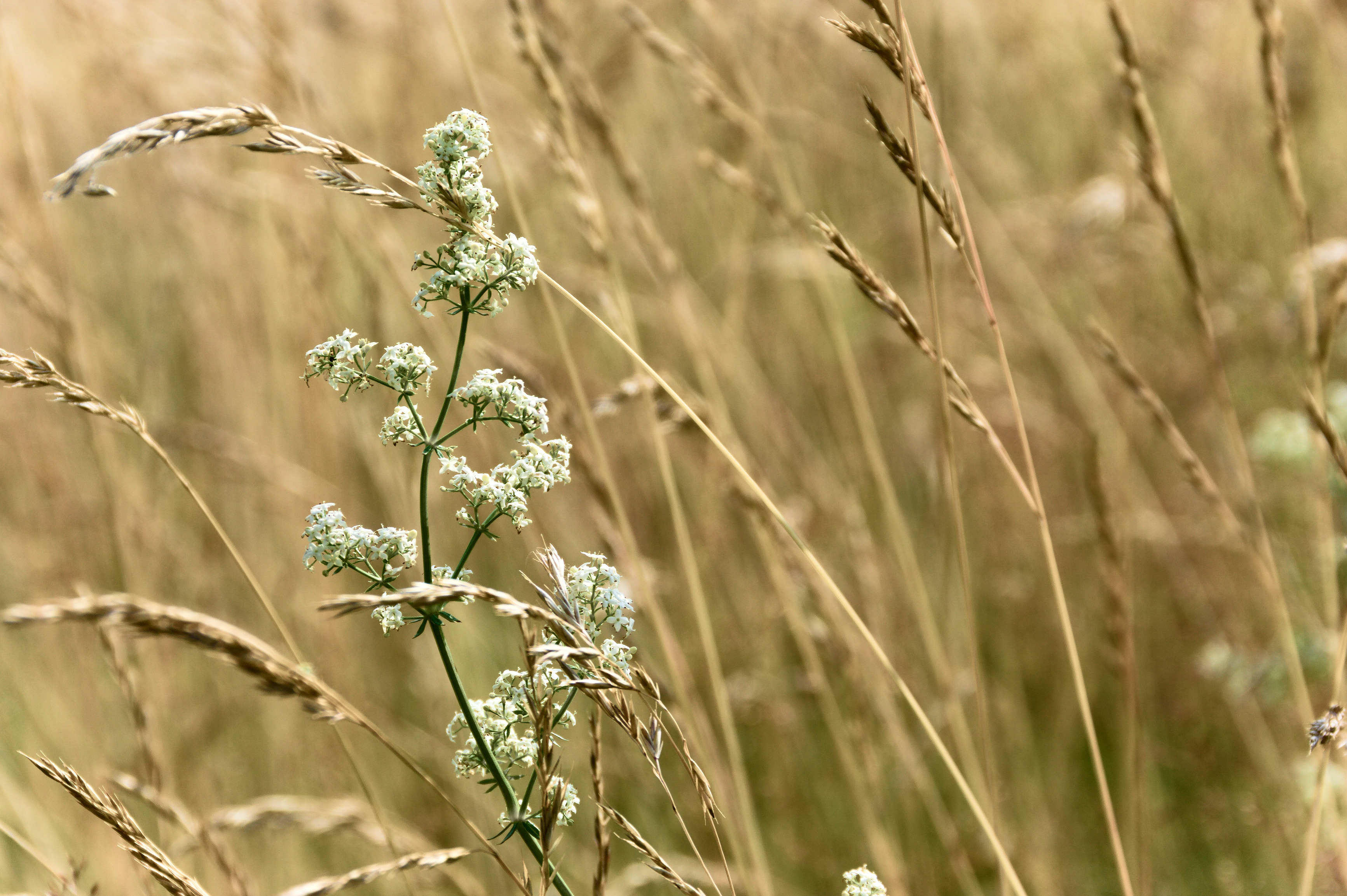
My mum keeps a large specimen of red basil on her front porch. When in bloom it drenches the air with its aromatic fragrance and reliably offers loads of purple flowers for nectar feeding insects. Therefore it is a convenient spot for capturing nice images of bees and butterflies. The other day I spotted a male blue (family: Lycaenidae, subfamily: Polyommatinae) among all the honey bees and I loved the contrasts of colour and shapes it provided:
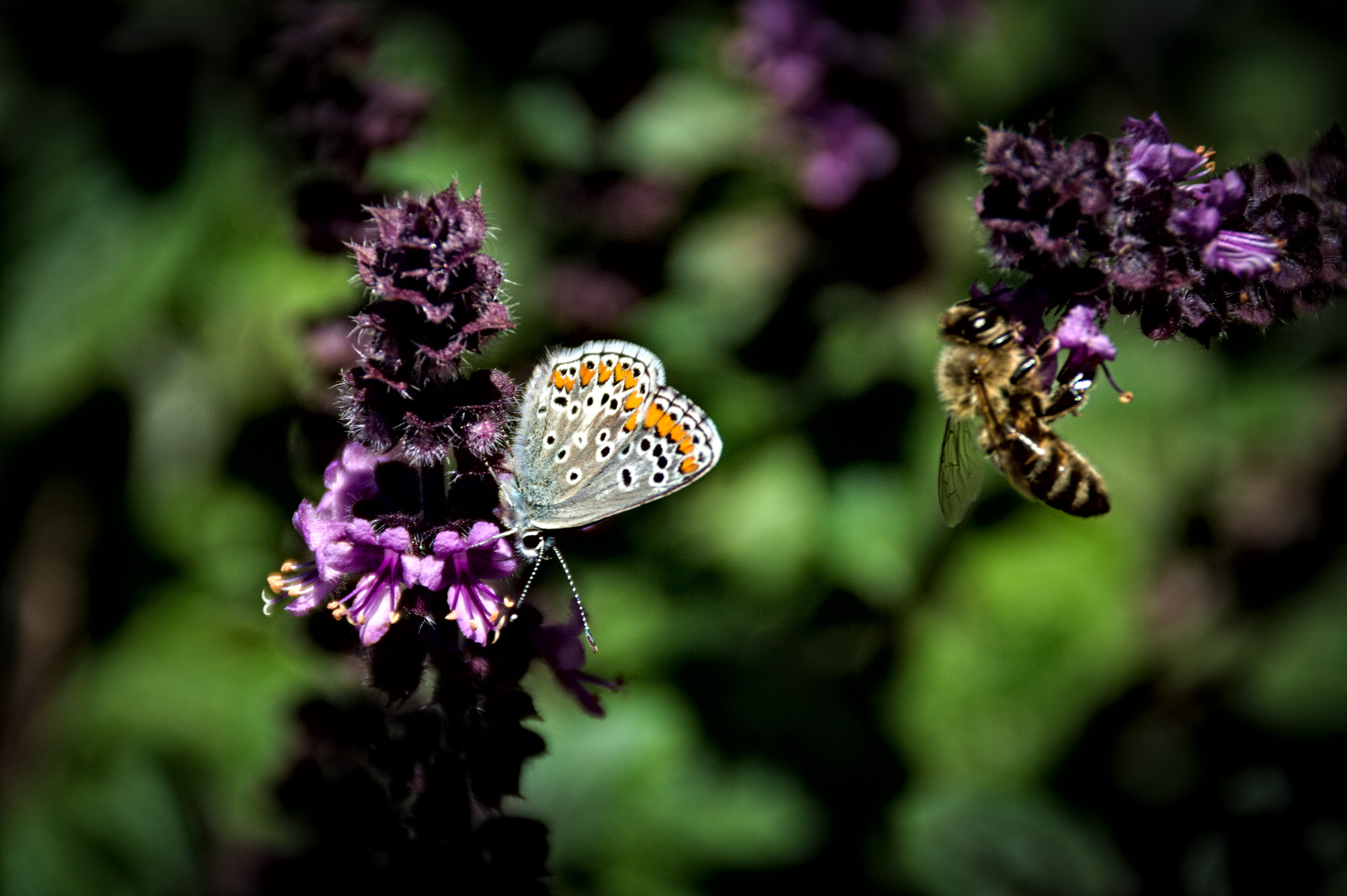
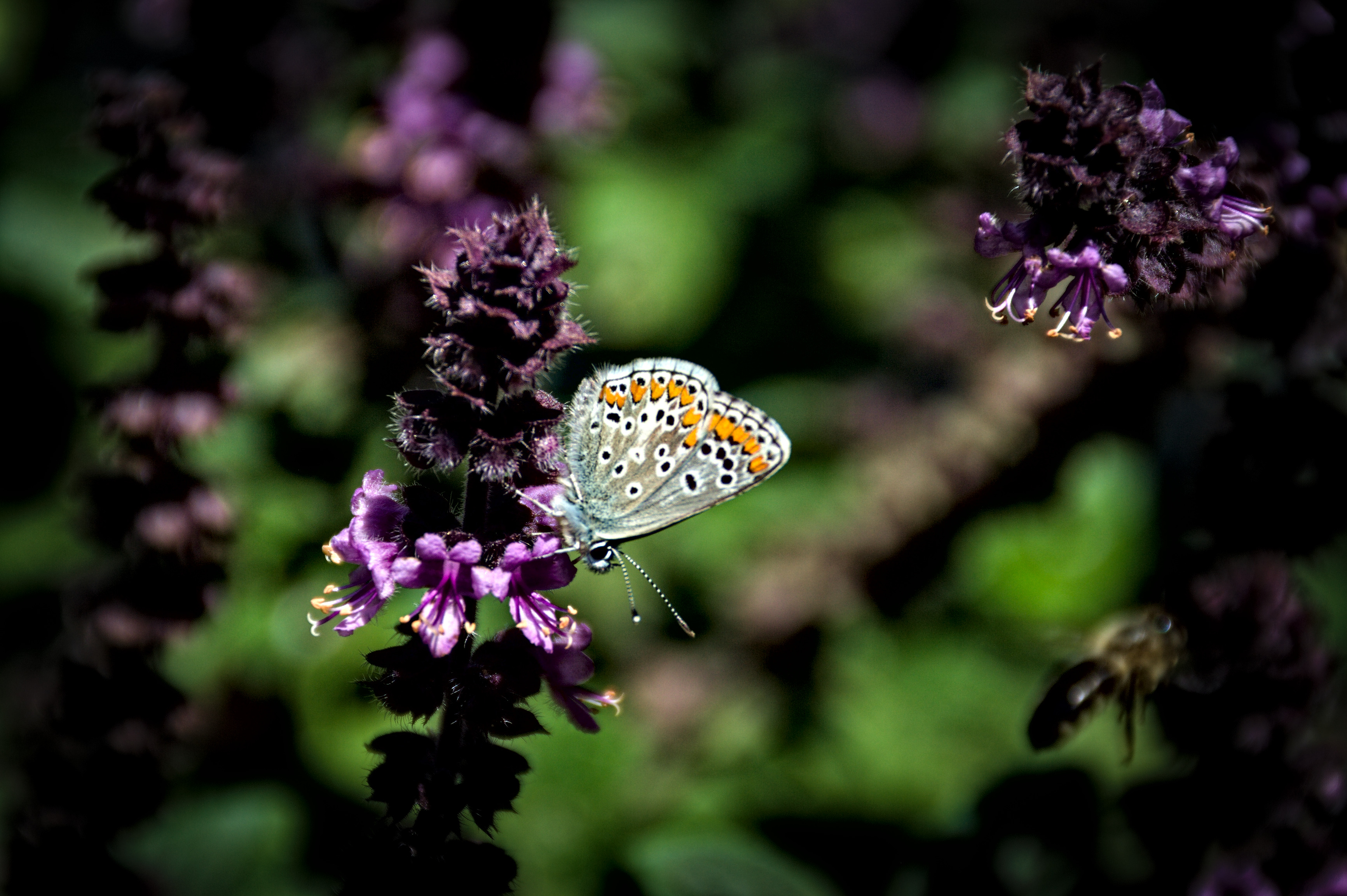
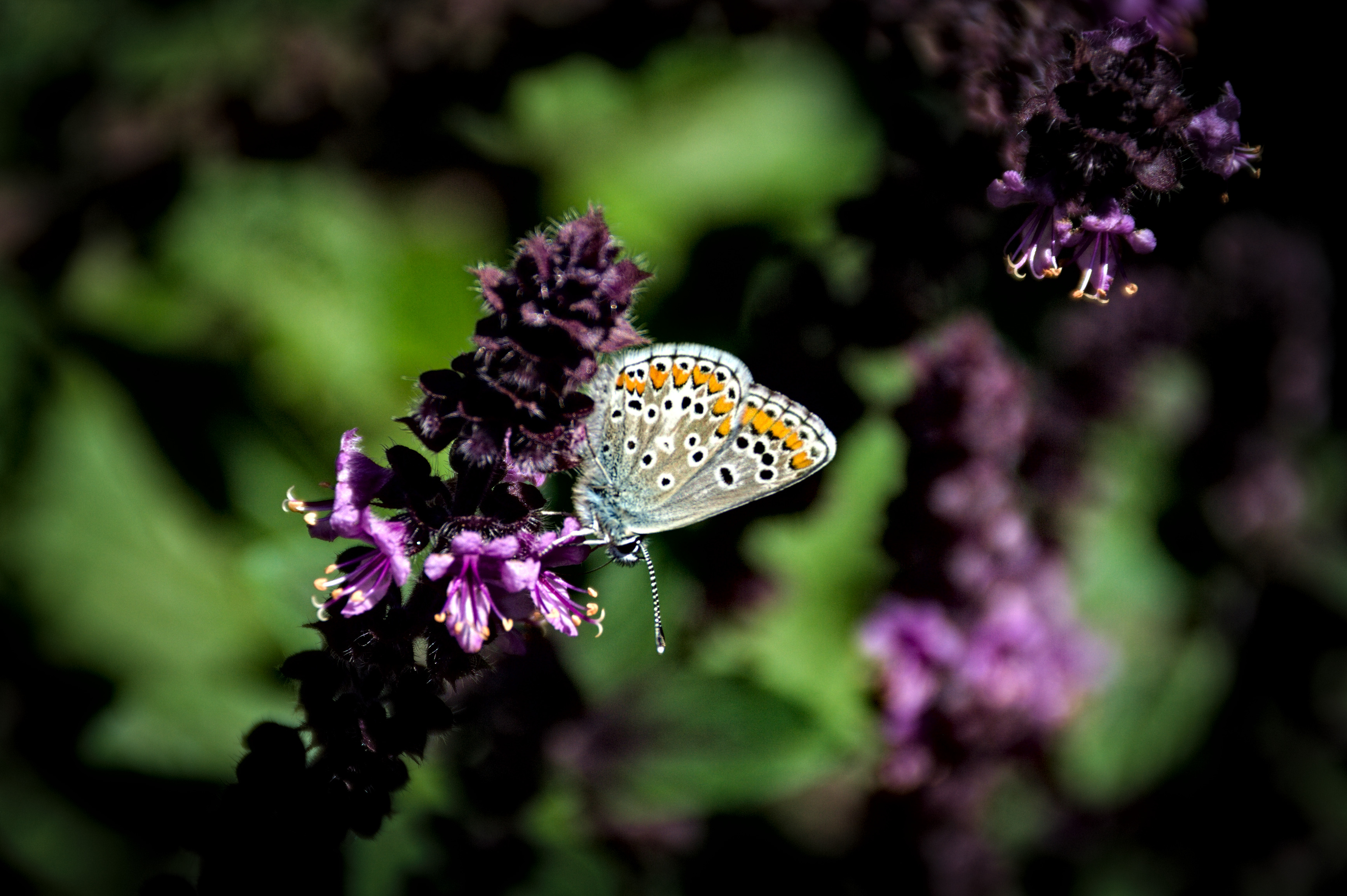


At some point I noticed some turmoil in the shrub and I came to witness a dramatic fight scene within the flowers: A European paper wasp (Polistes dominula) had attacked a feeding honey bee and they wrestled for their lives while hanging on a single leg from the blossoms. Both are capable of employing deadly stings, however a few moments later the wasp darted off with its prey.
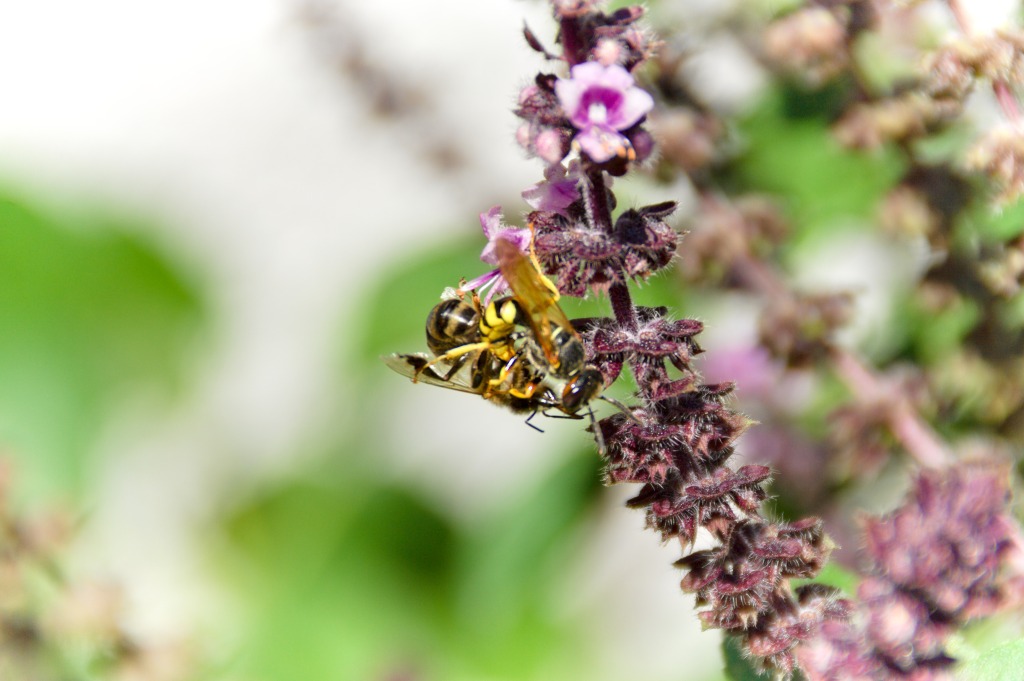
Tip: Not only the leaves of red basil are edible but also the flowers. They give a nice colourful and aromatic touch to salads, sweet desserts and even drinks (e.g. G&T). Try it out!
My mum 😉
